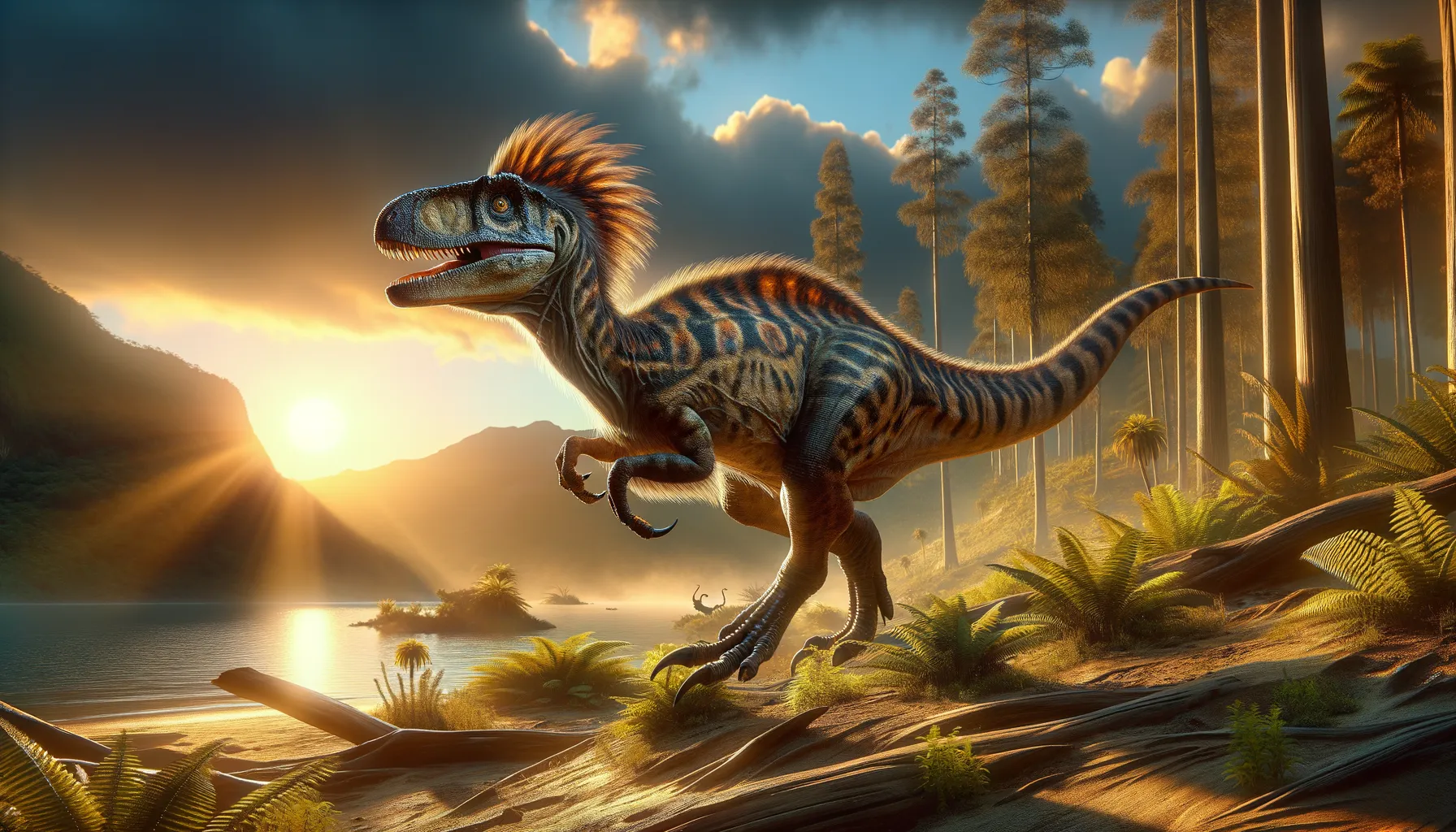
Santanaraptor
Swift hunter from prehistoric Brazil.
Period
Cretaceous
Length
Approximately 2 meters long.
Height
Roughly 1 meter tall at the hip.
Weight
Estimated around 10 to 15 kilograms.
Santanaraptor was a small theropod dinosaur that lived during the Cretaceous period. It is known for its relatively light frame and resemblance to more famous raptors, although significantly smaller. These dinosaurs roamed what is now Brazil, adapting to be swift hunters in their environment. Their fossil discoveries have contributed valuable insights into the anatomy and evolutionary path of theropods.
Diet
Santanaraptor was carnivorous, feeding on small animals and possibly insects. Its sharp teeth and agile build suggest it was a proficient predator, capable of capturing prey swiftly.
Hunting
It likely hunted alone or in small packs, using its speed and agility to catch small vertebrates. Its strategy would have relied on quick bursts of speed to surprise and subdue prey.
Environmental challenges
Living during the Cretaceous period, Santanaraptor faced challenges such as climate variations and competition from other predators. Its environment included diverse flora and fauna, requiring it to adapt to both forested and open areas. Natural disasters like volcanic activity may have presented additional obstacles, affecting food availability and habitat conditions.
Speed
Moderately fast runner, likely agile.
Lifespan
Estimated lifespan of about 20 years.
First discovery
Discovered in Brazil in the 1990s.
Fun Facts
- Santanaraptor was a small theropod dinosaur that lived about 110 million years ago during the Early Cretaceous period.
- The name 'Santanaraptor' means 'Santana thief,' named after the Santana Formation in Brazil where its fossils were found.
- Santanaraptor is known from only a single fossil specimen, which included some soft tissue remains, a rare find in paleontology.
- Despite its small size, it is believed that Santanaraptor was a fast and agile predator, using its long legs to chase down prey.
- Santanaraptor is related to larger theropods like the famous Tyrannosaurus rex, although it was much smaller in comparison.
- The discovery of Santanaraptor helped scientists learn more about the diversity of carnivorous dinosaurs in South America.
- Santanaraptor's soft tissue remains gave paleontologists valuable insights into the muscle structure and possible appearance of similar dinosaurs.
Growth and Development
Santanaraptor likely grew rapidly during its juvenile stages, as suggested by its lightweight bones adapted for quick movement. It may have experienced distinct growth phases, with significant physical changes as it matured. The development of speed and hunting skills would have been crucial for survival.
Habitat
This dinosaur inhabited regions that were semi-arid, with seasonal wet cycles, fostering diverse plant life. The environment included freshwater sources like rivers that provided sustenance and opportunities for hunting. It coexisted with various other dinosaur species, sharing its habitat with both herbivores and other carnivores.
Interaction with other species
Santanaraptor's interactions were likely competitive, often facing other predators for food. These dynamics could include skirmishes or avoidance strategies to prevent direct conflict. It might have also scavenged, depending on the availability of fresh carcasses left by larger predators.
Natural lifespan
Its natural lifespan was likely around 15 to 20 years.
Reproduction
Reproduction likely involved laying eggs in nests prepared in secluded areas, possibly with some parental care afterward. Seasonal changes might have influenced breeding cycles, ensuring hatchlings were born during periods of abundant resources. Hatchlings were probably well-developed and quickly capable of fending for themselves.
Social behaviour
While it is unclear if Santanaraptor was highly social, it may have exhibited some group-related behaviors, particularly during hunting or nesting. Simple communication skills could have been used to coordinate activities or warn of potential threats.
Fossil locations
Santanaraptor fossils have predominantly been found in the Santana Formation in Brazil. This region is renowned for its rich fossil deposits, which have provided detailed insights into many Cretaceous period species. These finds have been instrumental in understanding the diversity of theropod dinosaurs in South America.
